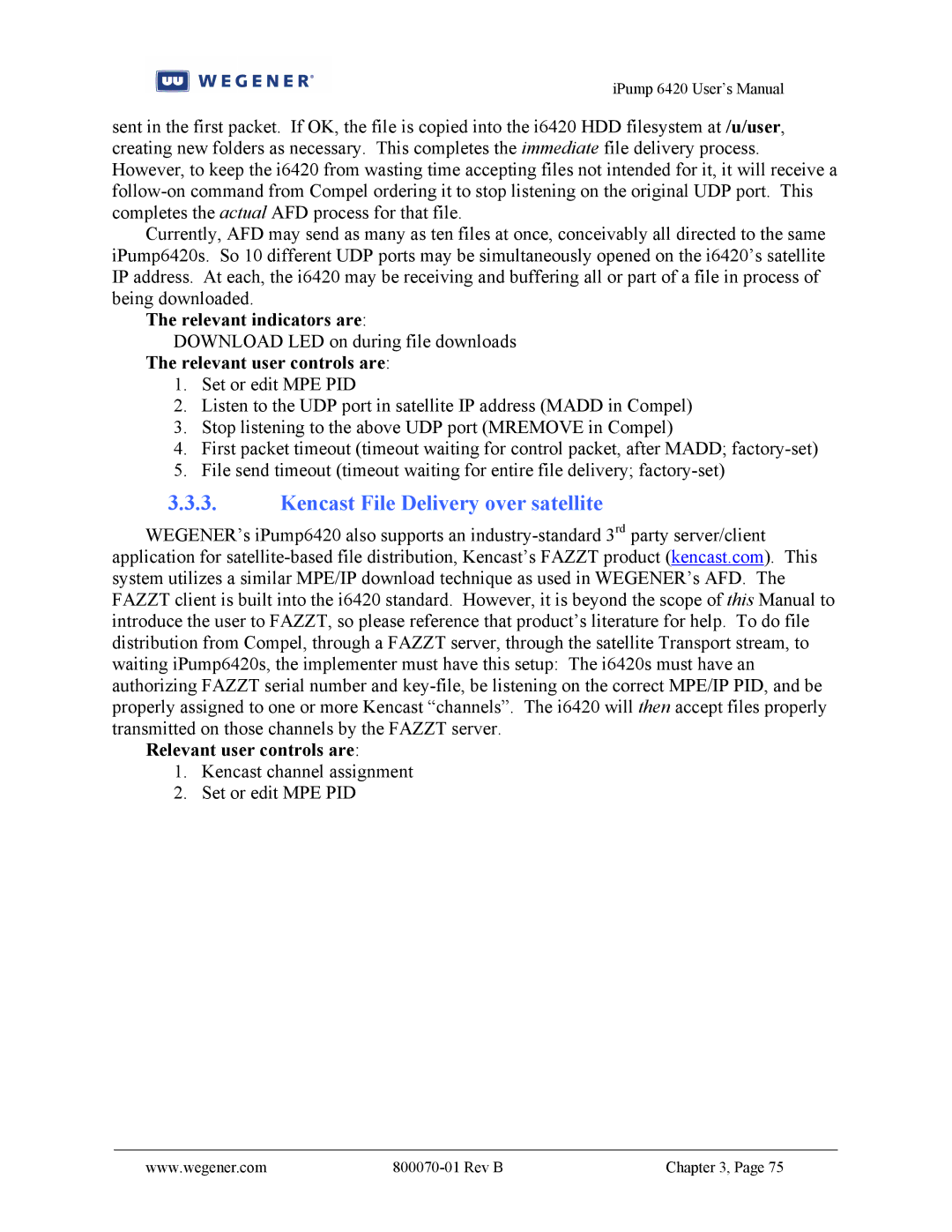
iPump 6420 User’s Manual
sent in the first packet. If OK, the file is copied into the i6420 HDD filesystem at /u/user, creating new folders as necessary. This completes the immediate file delivery process. However, to keep the i6420 from wasting time accepting files not intended for it, it will receive a
Currently, AFD may send as many as ten files at once, conceivably all directed to the same iPump6420s. So 10 different UDP ports may be simultaneously opened on the i6420’s satellite IP address. At each, the i6420 may be receiving and buffering all or part of a file in process of being downloaded.
The relevant indicators are:
DOWNLOAD LED on during file downloads
The relevant user controls are:
1.Set or edit MPE PID
2.Listen to the UDP port in satellite IP address (MADD in Compel)
3.Stop listening to the above UDP port (MREMOVE in Compel)
4.First packet timeout (timeout waiting for control packet, after MADD;
5.File send timeout (timeout waiting for entire file delivery;
3.3.3.Kencast File Delivery over satellite
WEGENER’s iPump6420 also supports an
Relevant user controls are:
1.Kencast channel assignment
2.Set or edit MPE PID
www.wegener.com |
| Chapter 3, Page 75 |
